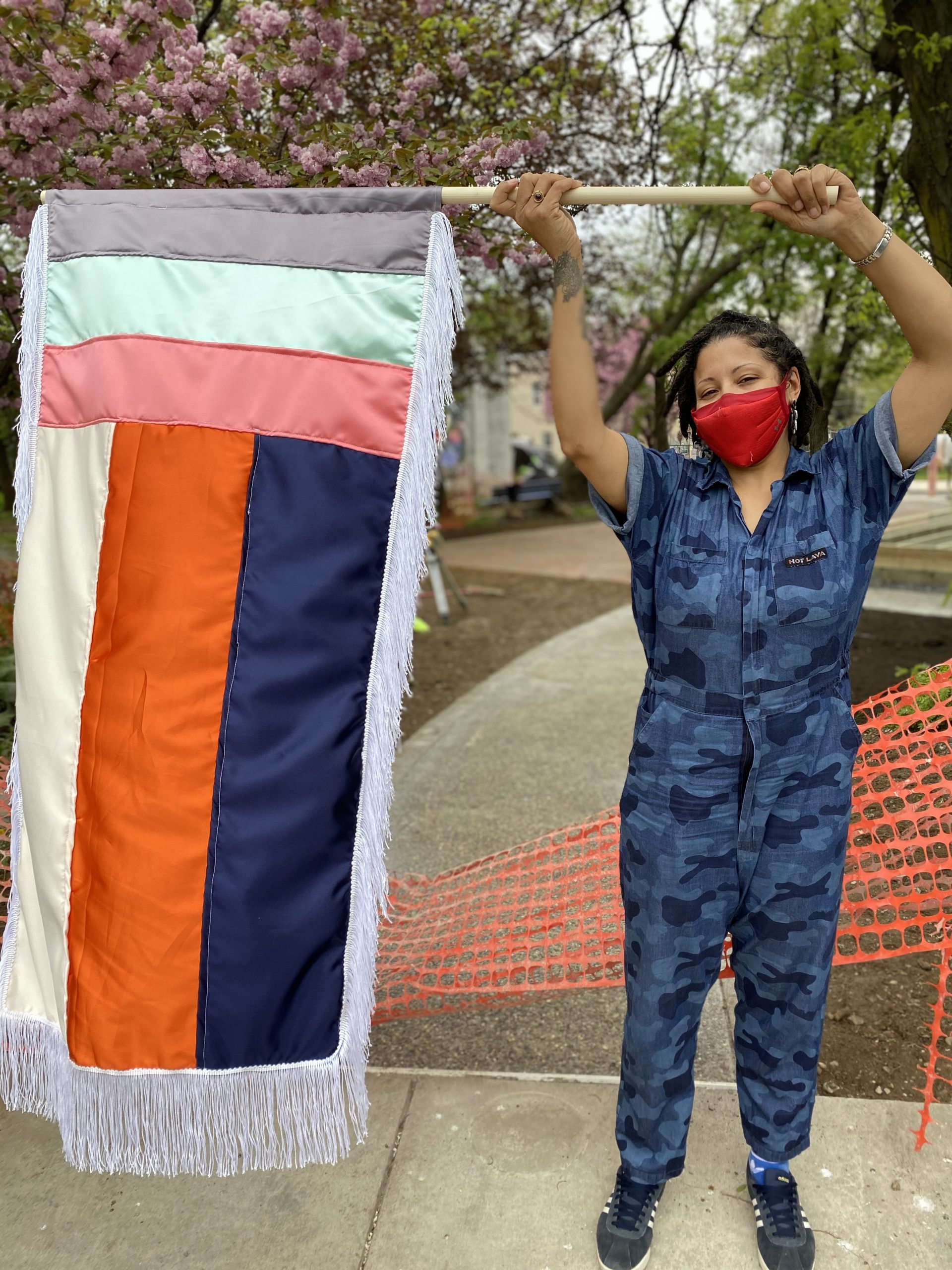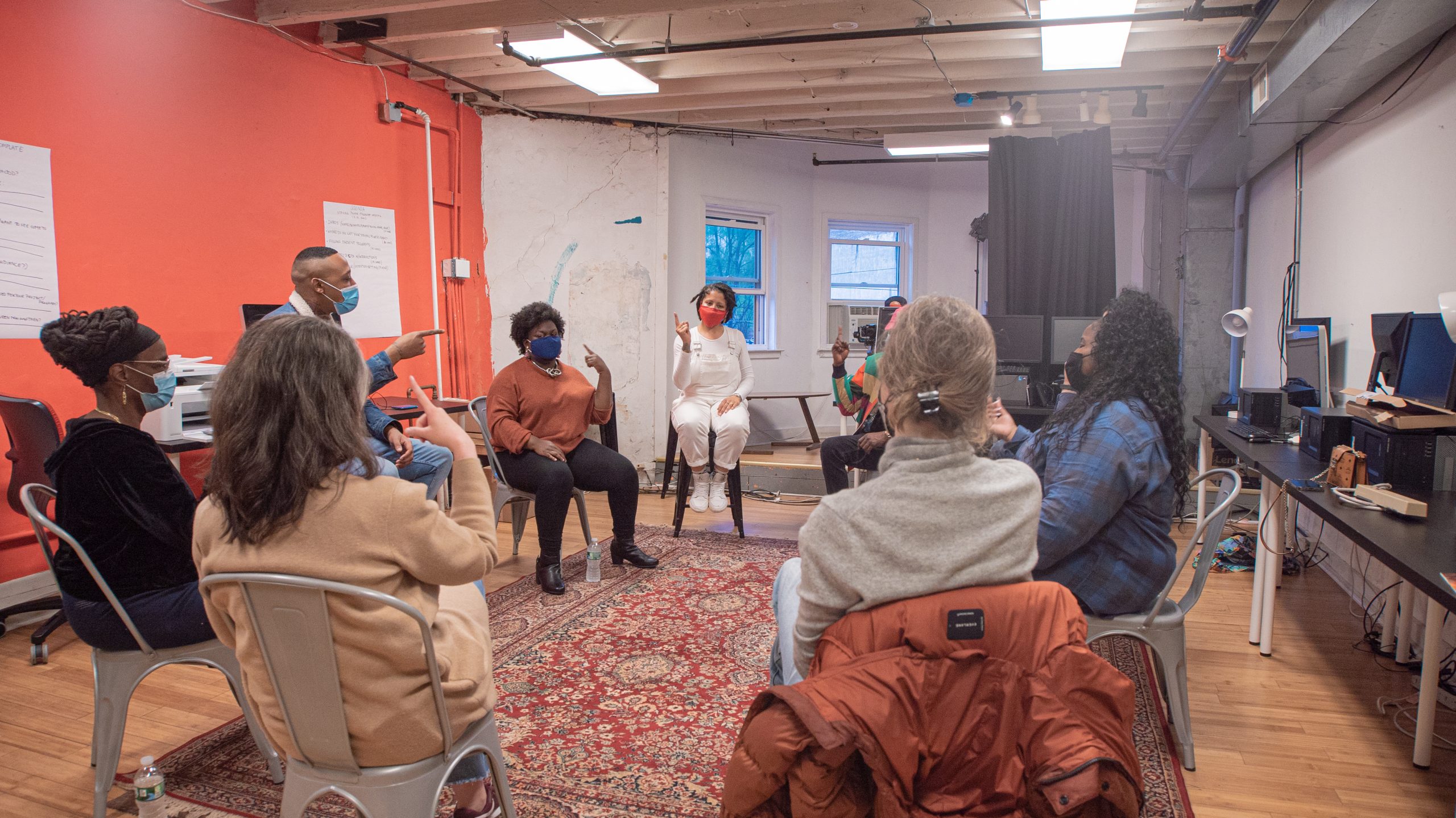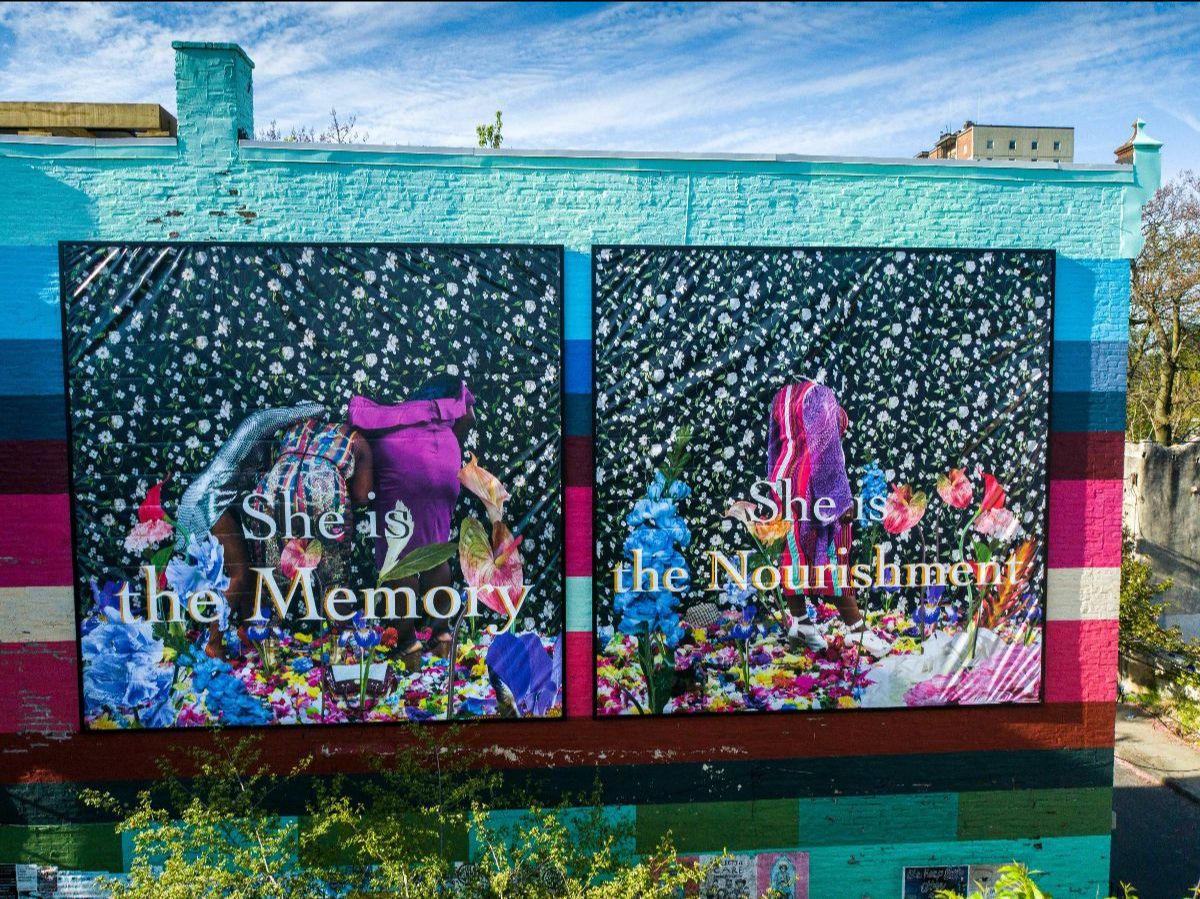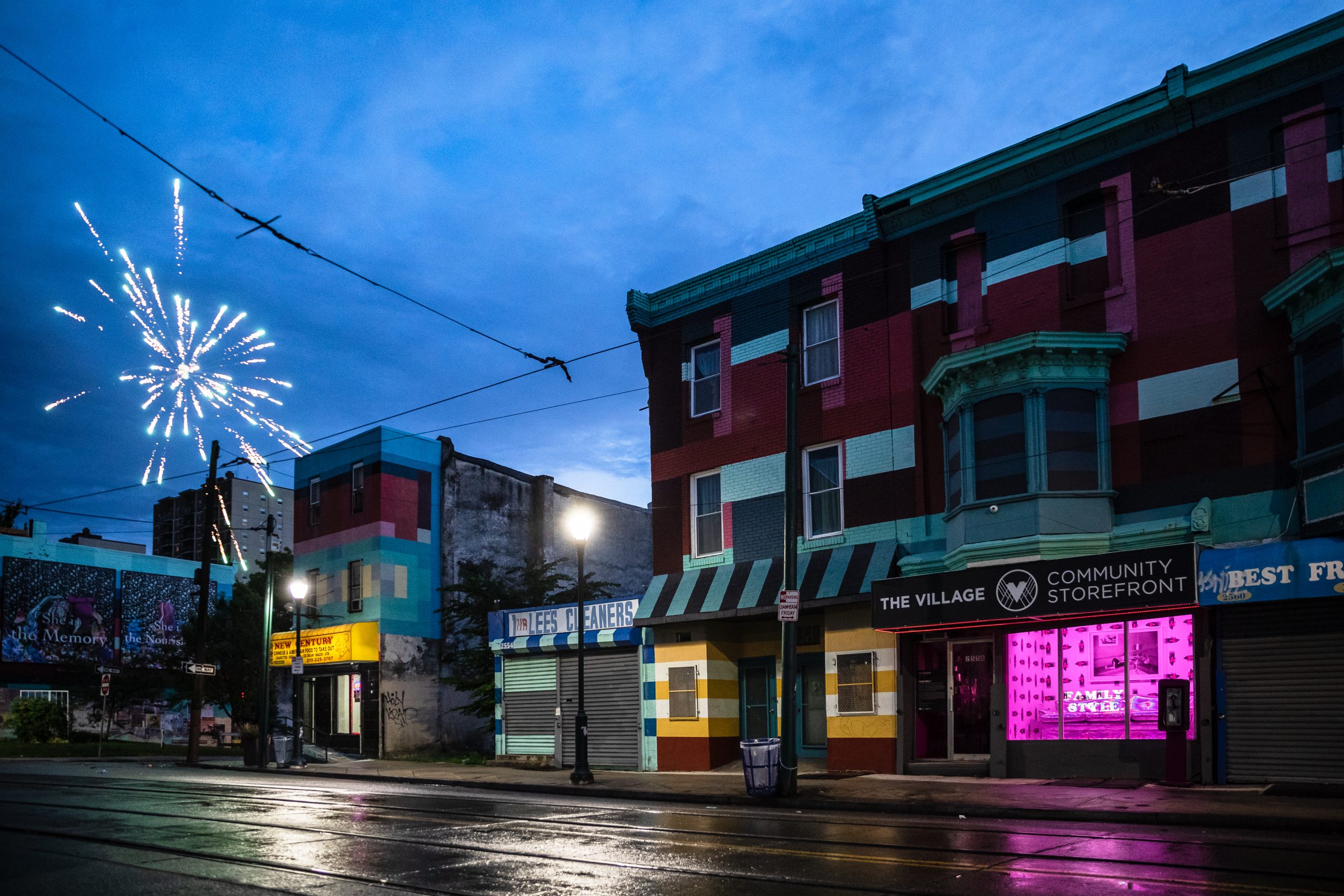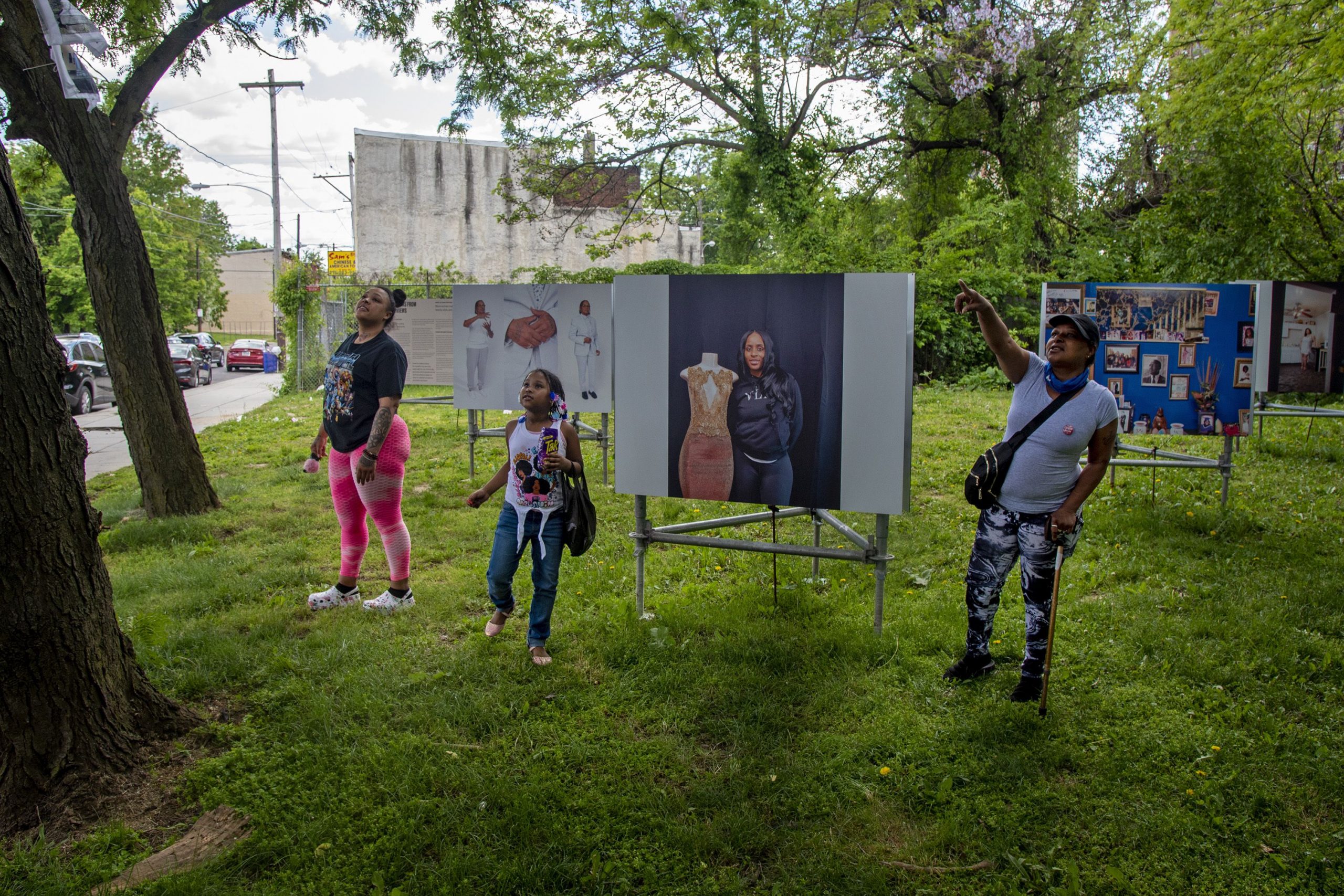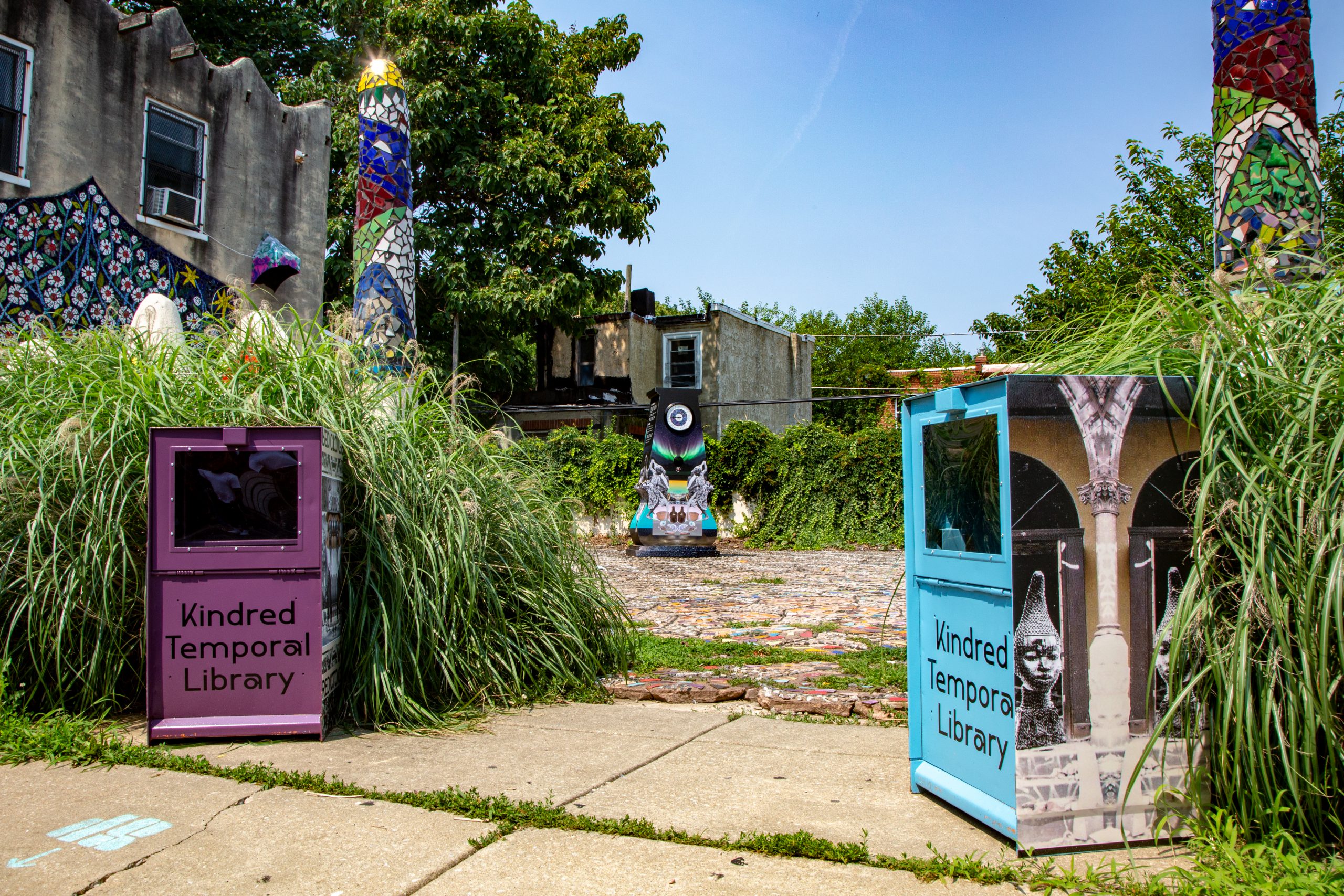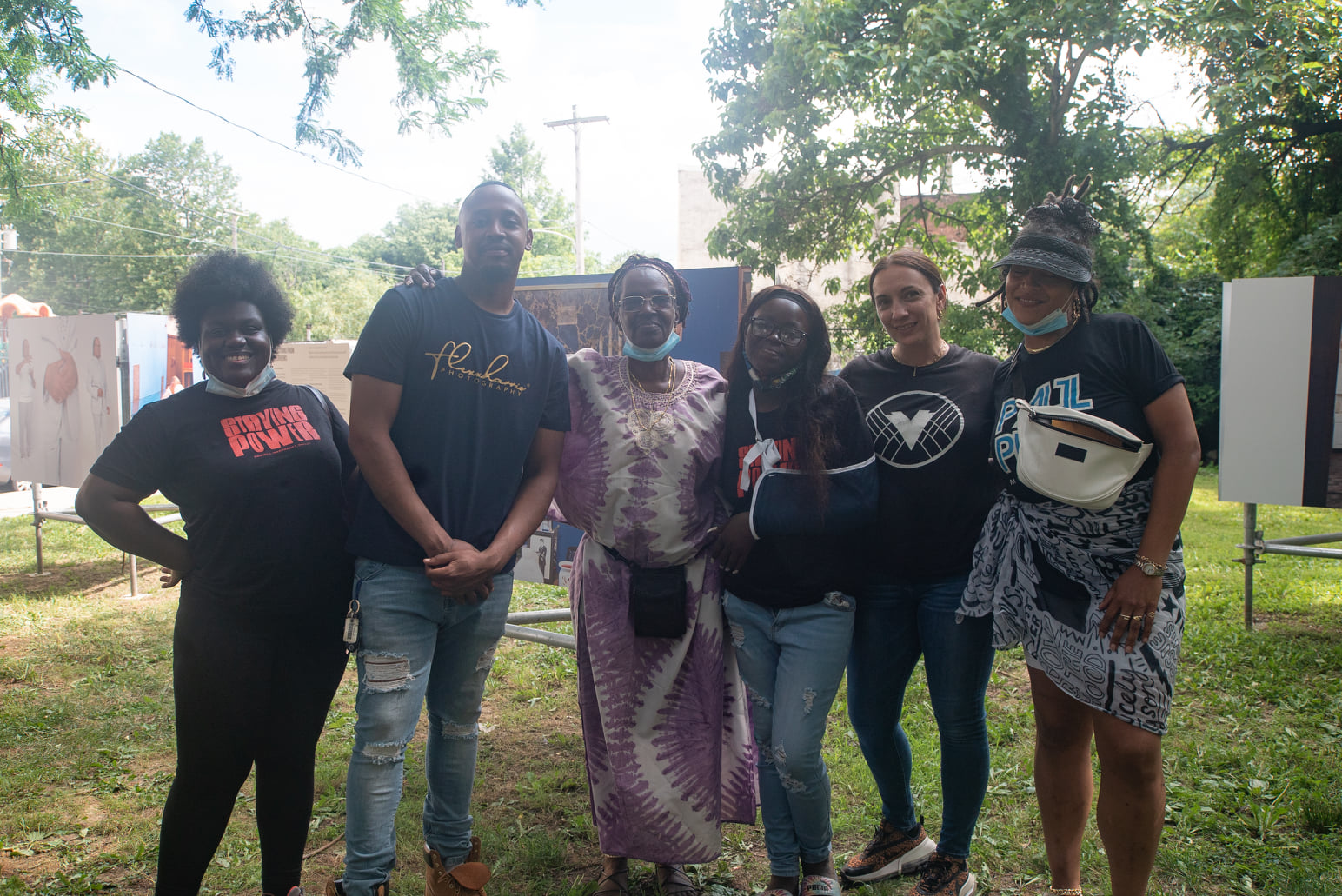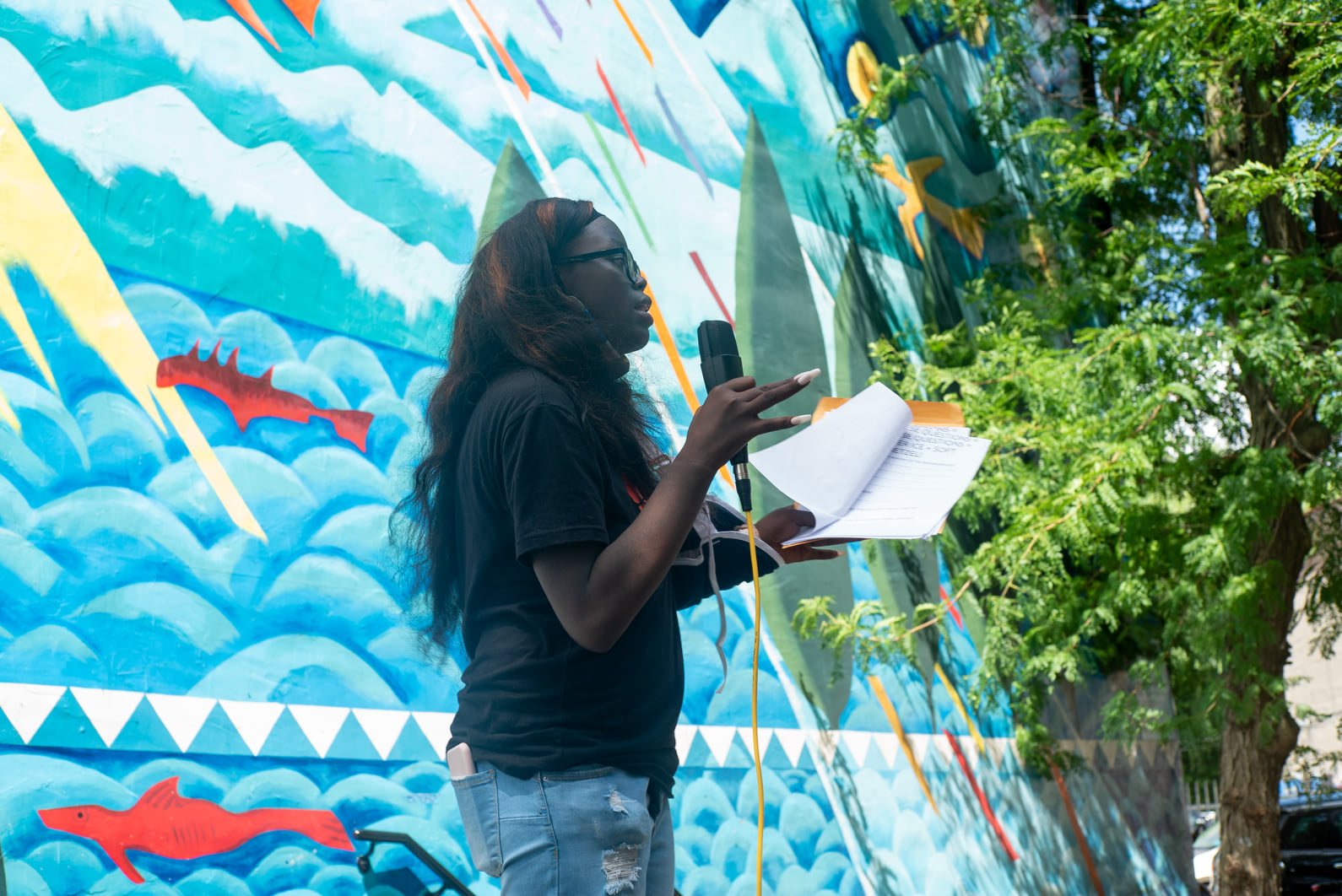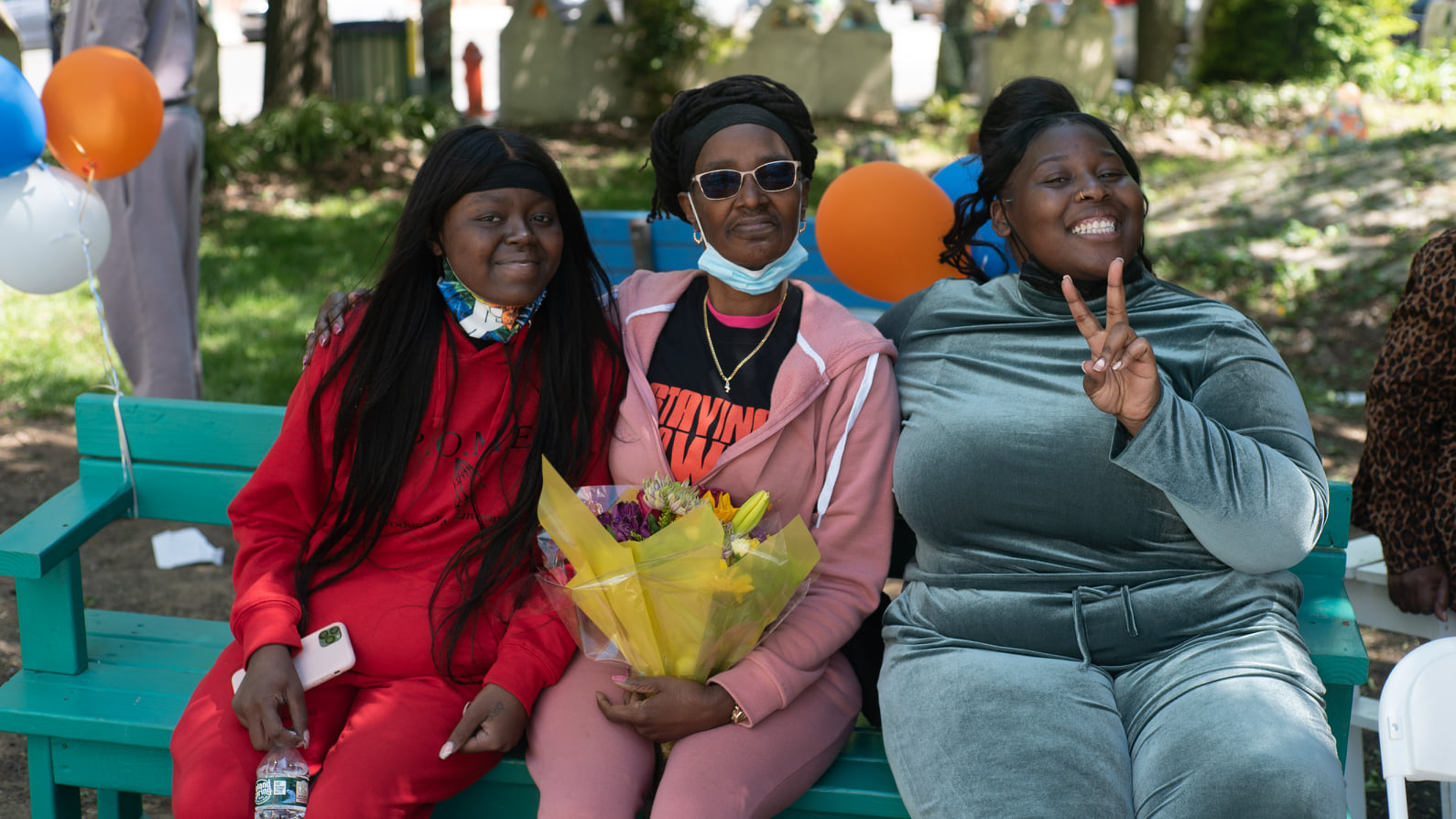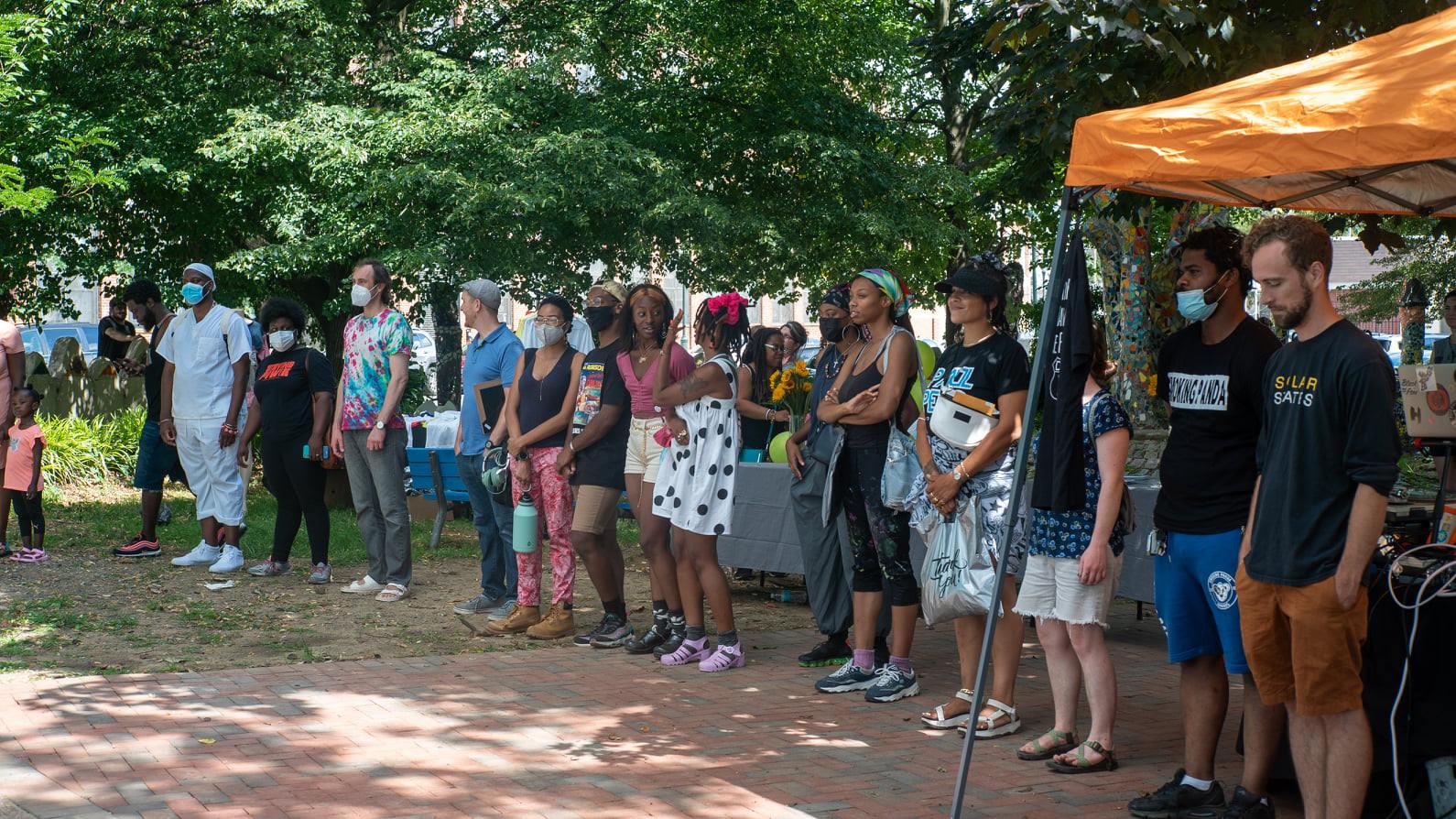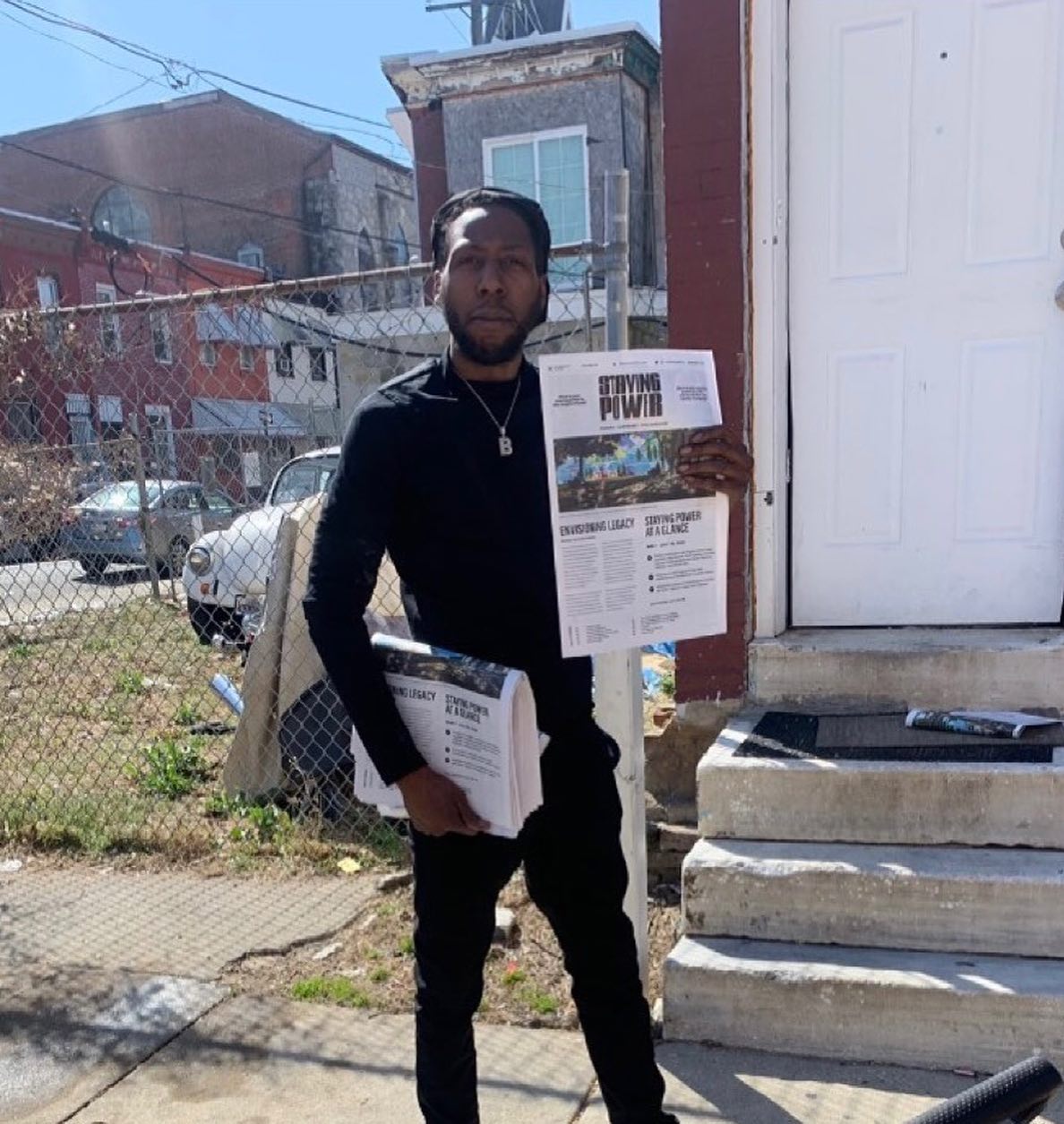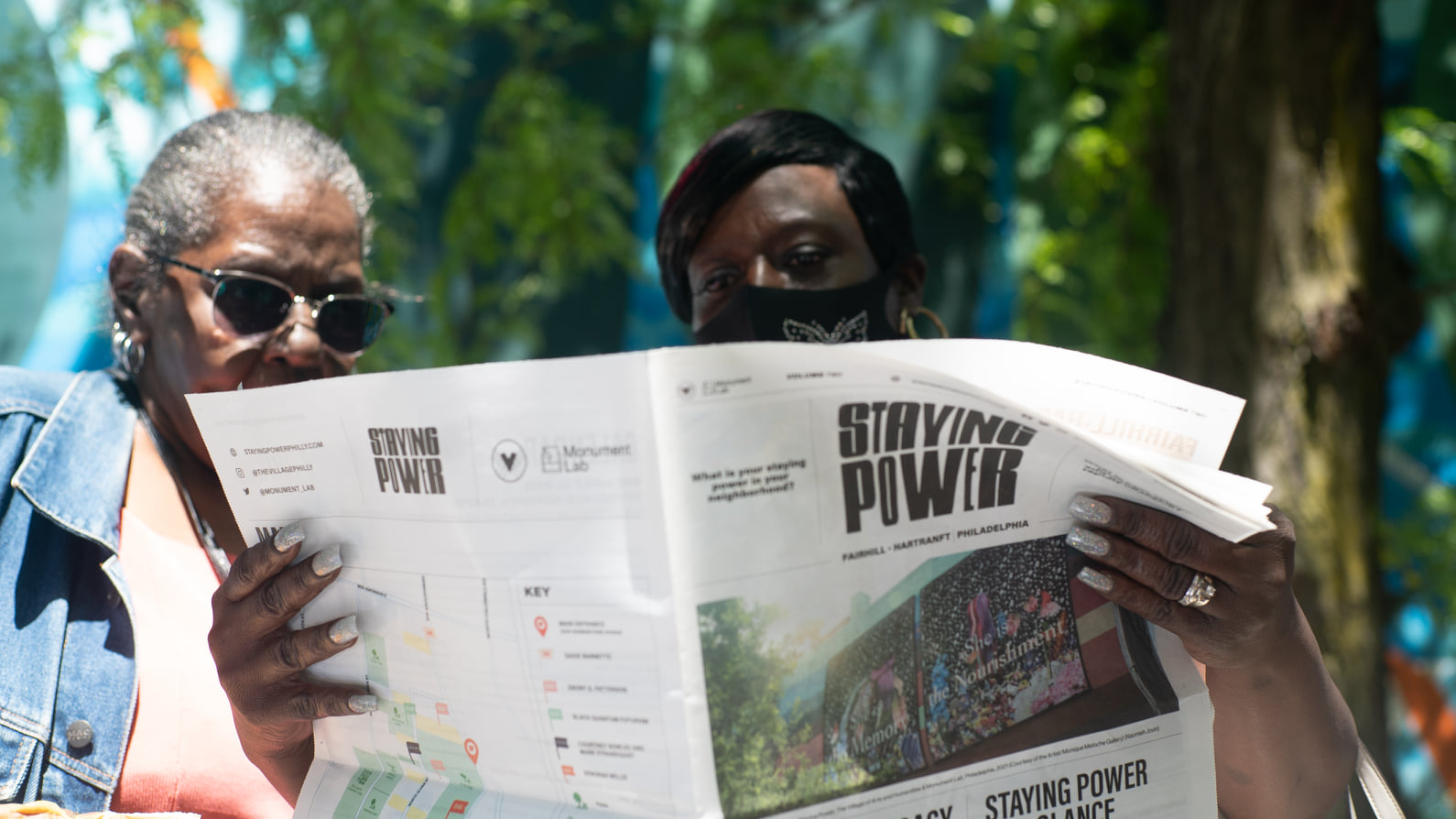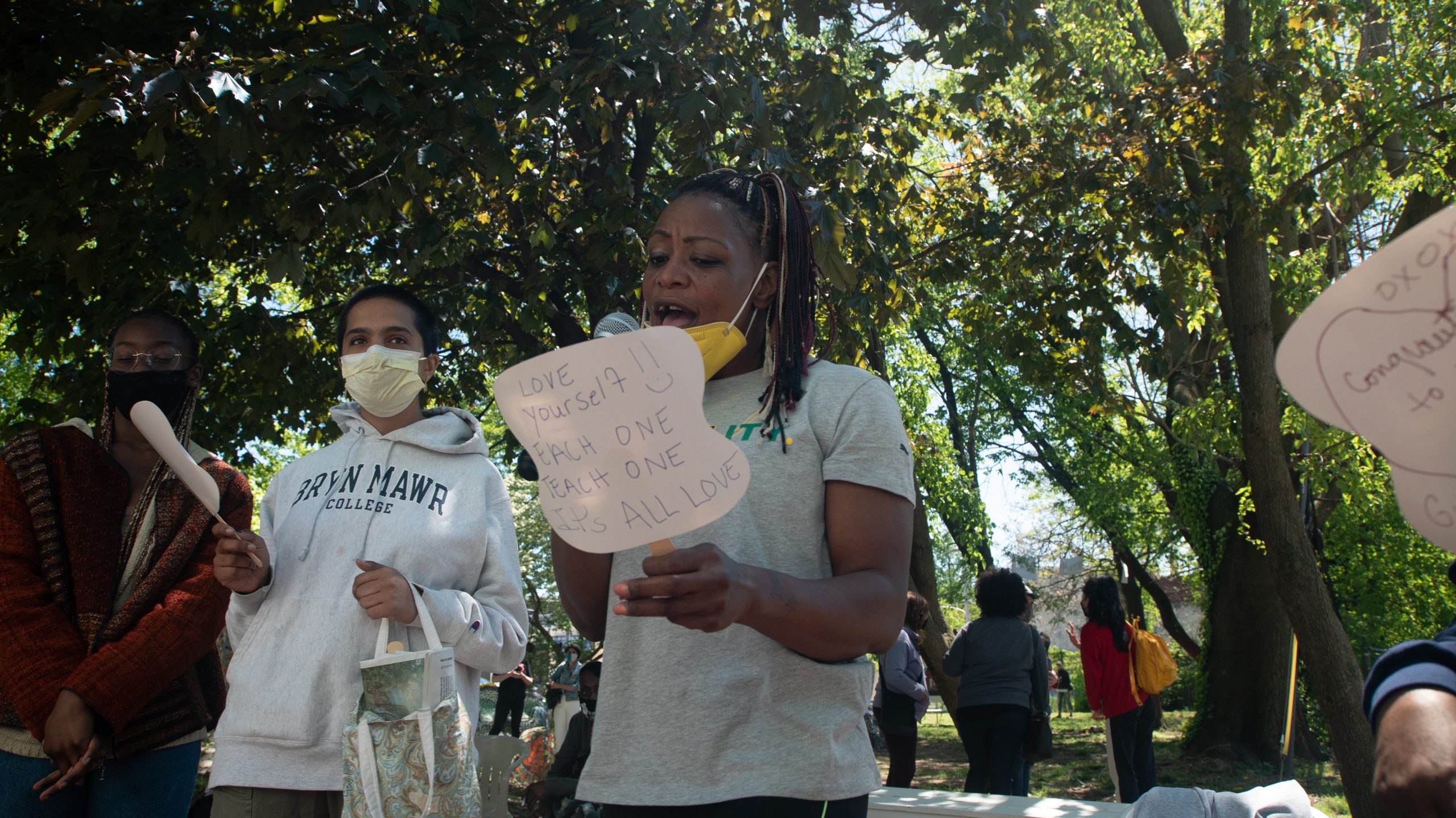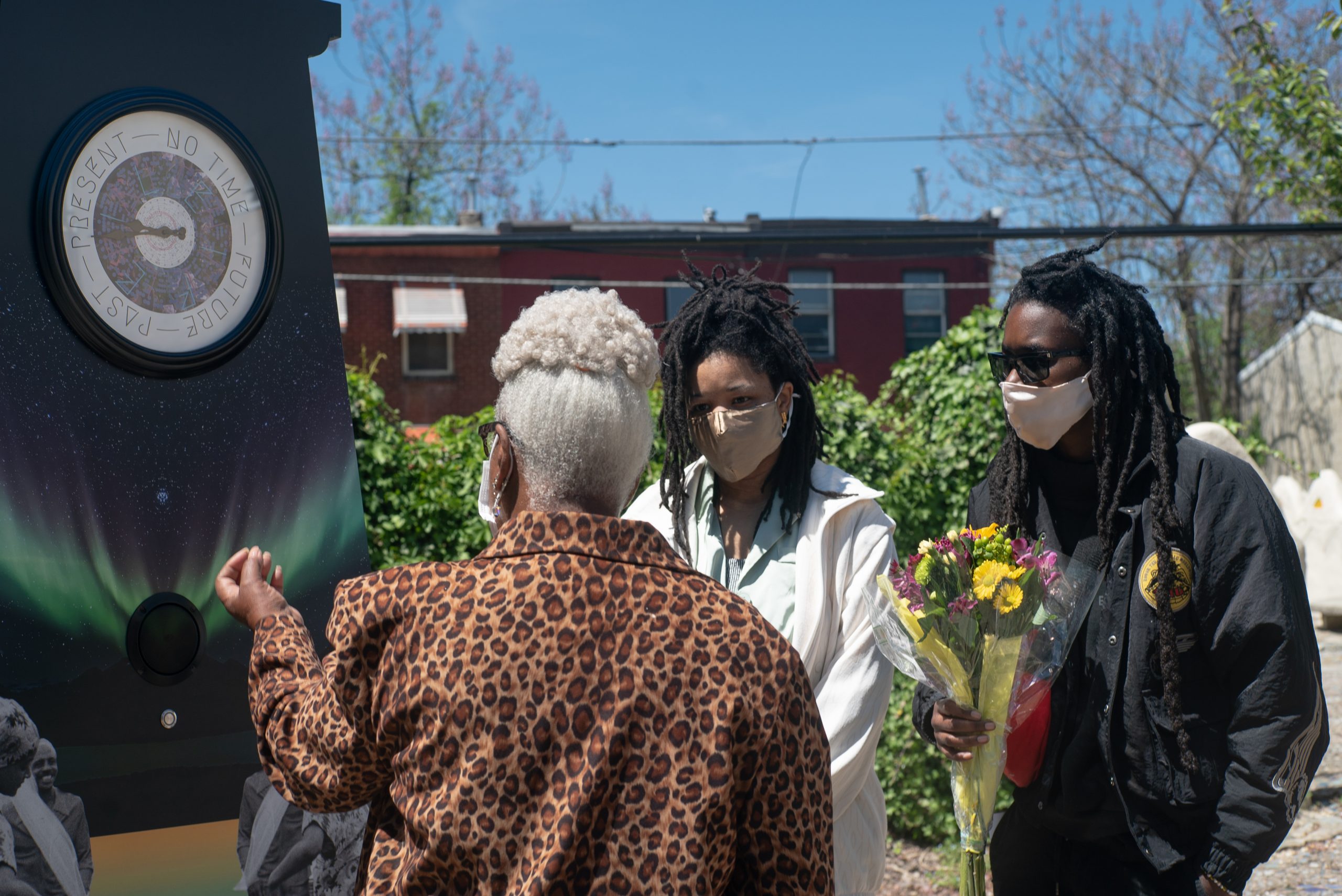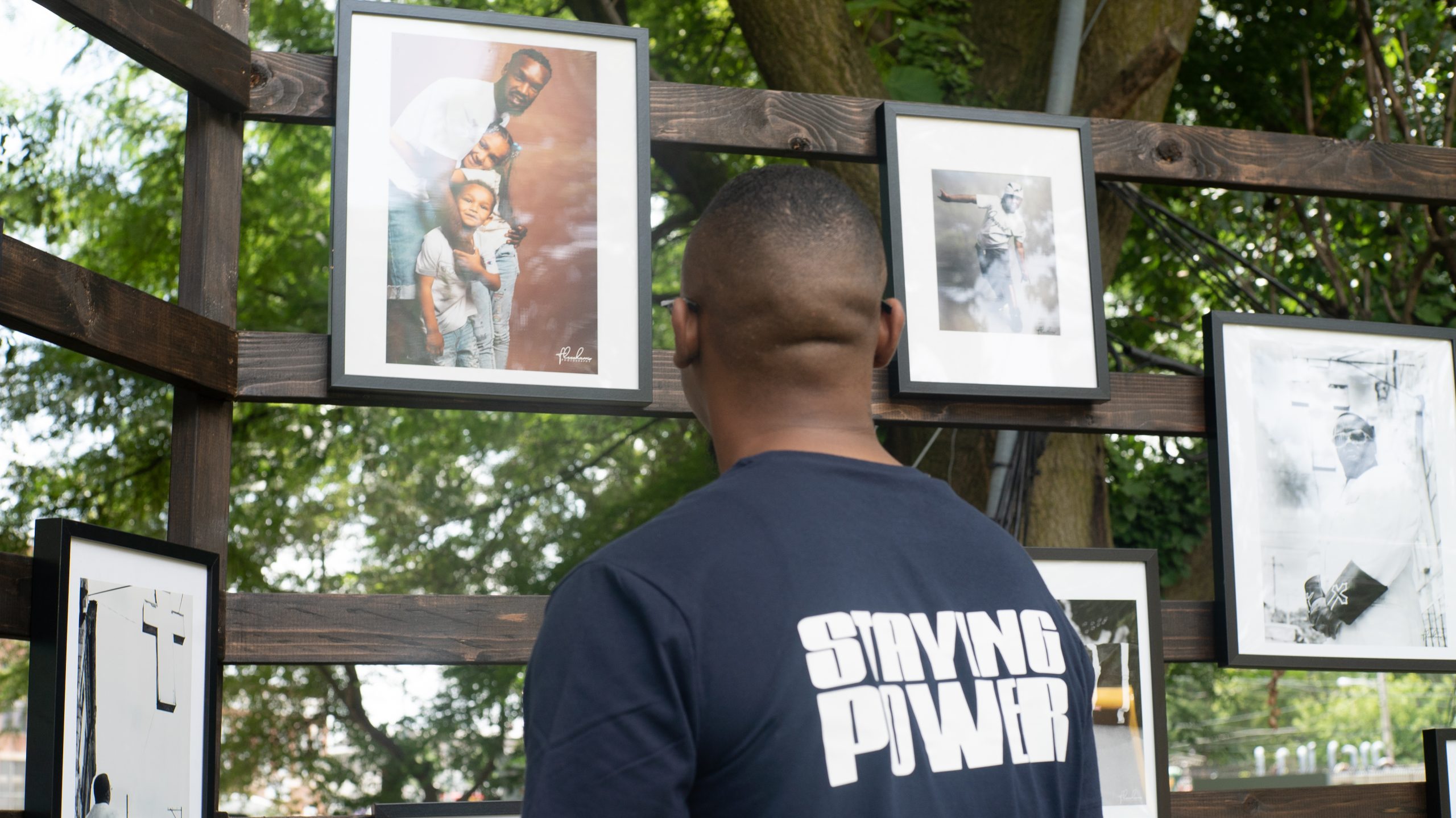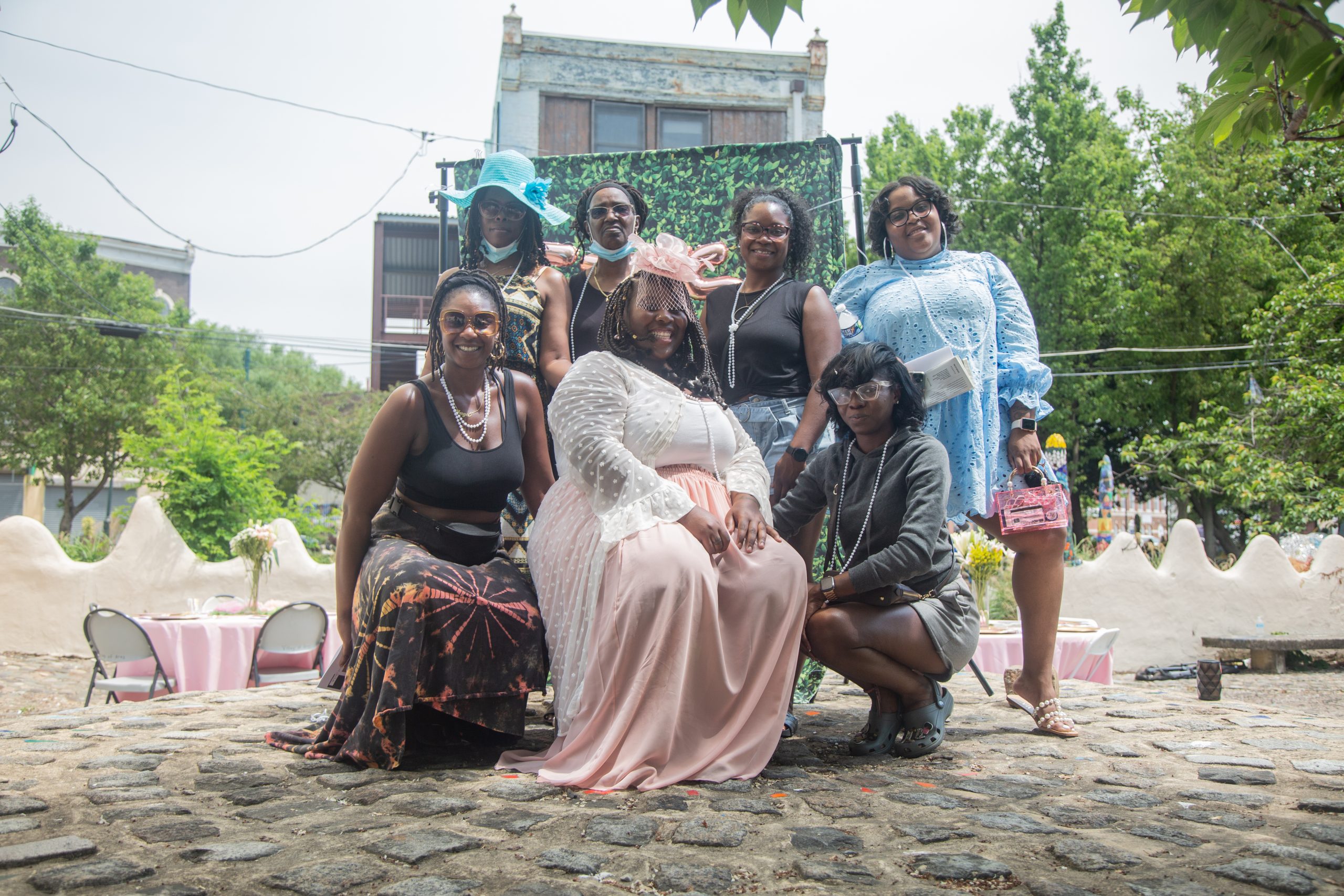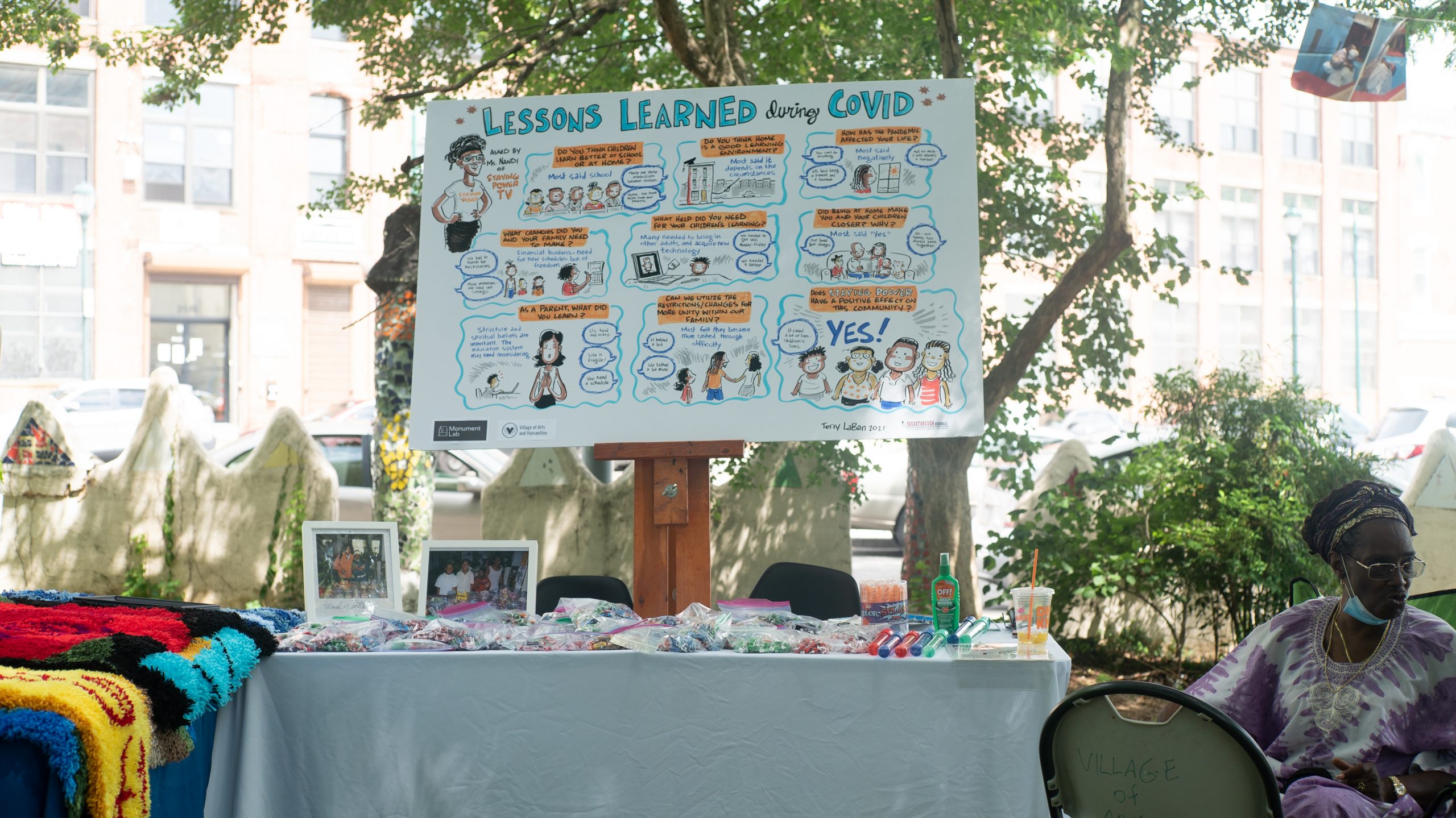The Staying Power public exhibition and program series project wrapped up last month. Our abundant summer of outdoor events, tours, and a large-scale exhibition of new works explored the questions: what is your staying power in your neighborhood? What is staying power in a city that’s rapidly changing?
Staying Power was a very special experience for The Village, as the first public art project we’ve been able to share with our community since the onset of the pandemic. Staying Power returned friends, visitors, music, art and dancing back to our parks. The project wove new connections, evoked the sharing of long un-told stories, and sparked unfolding collaborations between artists and community members. It reminded us what sharing joy — Village-style — can feel like, how much we’ve missed it, and how fiercely committed we are to protecting the joy of our people and our place.
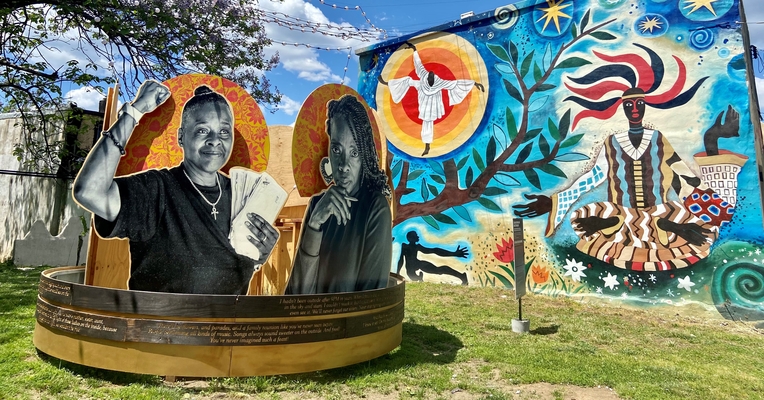
“On The Day They Come Home,” Courtney Bowles and Mark Strandquist
We designed this project well before the pandemic. Together with Monument Lab, we imagined Staying Power as a way to curate and exhibit art in collaboration with our community on a grand scale. We envisioned a year of intense in-person engagement across our neighborhood, with the Neighborhood Curatorial Fellows running a community storefront on Germantown Ave. Then, a few days after our first planning meeting, COVID-19 hit. Staying Power was briefly put on hold as we focused on urgent mutual aid responses to the pandemic.
When we returned to the project, we knew we needed help to make it happen. That’s where Jeanette Lloyd comes in.
A longtime friend and collaborator of The Village, Jeanette is an artist and community-builder with years of experience getting complex projects done and keeping relationships at the center of her work. In October 2020 — full-on Phase 1 pandemic — We asked Jeanette to join us as our Staying Power project manager. We are so lucky she said yes.
In partnership with the team at Monument Lab, Jeanette set up virtual visits for the artists and found local collaborators when they couldn’t be there in person. She recruited an amazing group of Neighborhood Curatorial Fellows and organized their online meetings, sometimes sitting outside the house of a community member in her car in case she had to troubleshoot technology. She worked from the Village side to coordinate the roll-out of all our summer SP programming, was there for every event and supported artists and every Curatorial Fellow in workshopping and executing their ideas. She helped bring Staying Power to life.
So, as we take a moment to look back on a summer of Staying Power, we thought we’d check in with Jeanette — to celebrate her joining The Village full-time as Senior Manager of Special Projects, and because she was one of the people to got to see Staying Power in all its behind-the-scenes challenges and glory.
So, Jeanette: say a little bit about your work and how you got involved in all of this.
Philadelphia is home. I studied at Temple University and Philadelphia Community College. I consider myself an artist, but I’m also very organized, so I’ve become a project manager for artists as well. I first joined the Village as an entrepreneurship mentor in 2019. Then last fall, the Village’s executive director, Aviva, said hey, there is this amazing outdoor exhibition with components of a neighborhood fellowship and programming, and asked if I’d want to manage the project.
How did you perceive the project when you first began working on it?
To be honest, because I was not part of originally conceptualizing this project, at first, I wasn’t sure if I’d understand how all the parts were meant to work together. But eventually it just really made complete sense.
How so? Tell us how the components of the exhibit — the theme, the artists, the fellows, the installation, and the programming — all came together?
Ok, so first you have the driving question of the exhibit: what is your staying power in your community, and in a city that’s constantly changing? That’s really what helps us all be having the same conversation.
Then, the artists, who were both from Philadelphia and outside, explored this question as it related to their own communities and also specifically to our neighborhood here in Fairhill-Hartranft. There is no place-making without considering the people and history around it. Because of the pandemic, many of the artists couldn’t visit in person. So we and the Monument Lab team worked hard to make sure the artists understood our context via Zoom visits, sending media, and conversations with the neighborhood fellows.
The big purpose of the Neighborhood Curatorial Fellows was to invest in these residents’ own staying power in Fairhill-Hartranft — by supporting their entrepreneurial efforts with funding and connections. The fellows informed the artists, and the artists informed the fellows. The fellows helped to ground the project in our community. They consulted on what we were missing from a neighborhood perspective. The artists shared their work with them and in some cases collaborated with them, like Deb Willis and her project Women’s Work which featured Ms. Nandi and Aisha.
The artists also gave the fellows prompts based on their own work. Then the fellows used them as a jumping off point to create their own programs and projects — for example, the Fairhill-Hartranft Civic Fair. It was a symbiotic relationship. And remember — all of this planning, except for one or two meetings, happened remotely over Zoom before we were able to launch the outdoor exhibit and programs.
The public art in this project is absolutely stunning. It’s also received a fair amount of coverage that folks may have already seen. The neighborhood curatorial fellowship sounds really important to the success of the project but is a little less in the public eye. Since you had a front row seat to that process, can you talk about that a bit?
I’m glad you said that. To a certain extent, the curatorial fellows program is a more private or community-facing investment in our neighborhood, versus a public expression meant for visitors. The programs the fellows designed were really for the community members, and as a result, were not as widely seen by design. But I just don’t think that the exhibit would have been nearly the success that it was without them, and how vulnerable and honest they were with us and each other. There were so many times where, you know, they shared beyond maybe what they had before. They were truly honest and taught us a lot about the community that we couldn’t have known without their participation.
Nandi, Fred, Aisha, Salem, and Tasha are such unique and powerful artists and entrepreneurs each in their own ways. How did the group come together? I’m thinking about the part of an action movie where the team assembles and you see the skill each person brings.
I got to call them and say, hey, you don’t know me, and we’re in the middle of a pandemic, but I’ve heard you’re an amazing photographer or designer, and I have this opportunity you may be interested in. The Village had earned faith with a lot of them in the past. So, afraid as they were of COVID, and as locked down as we were as an organization, they were willing to adjust and find a way to make this happen.
What’s an example of a Neighborhood Curatorial Fellows-created program that you saw resonate with visitors from the neighborhood?
All of the fellows really impressed and inspired me, and it’s hard to choose. Just as an example, I could highlight Natasha. She’s still in high school, and dealing with health issues, but was the youngest fellow and did an amazing job. Her perspective is so valuable when we’re talking about staying power because she has the longest future ahead of her. She wanted to speak gentrification. She wanted to interview youth, middle aged people and elders about what they remember in the neighborhood, what’s gone, why they stay or visit the neighborhood, and what certain disappearing businesses or landmarks meant to them.
Natasha has studied photography at The Village for years. Our investment with Tasha was a professional camera, so that she could capture gentrification in real time and then do research based on those locations to see what had been there in years past. She went to the Temple archive to find historical photographs. It was her first time going, which was so cool. For example, the Sun Pay building was one of the her focuses of study — what is there now, what was there when she was younger, and what do the elders remember about that space. She created an exhibit of her photographs and research.
Then, during the Civic Power Fair, she brought all of the residents of the community up to the front to make a line. It was a survey — saying, step forward if you remember the rec center, or when we used to have an open pool, or if you knew Arthur Hall, or if you knew when the projects were built. It was just interesting to see so many people stepping forward, until we had the winner — a person who had experienced and remembered so much that they had become a bit of a historian on what existed. the saying power competition based on the fact that that person had experienced and seen and remembered so much of the neighborhood and in fact is like now, sort of like a historian on what existed. That visitor got a lot of respect, you know, she got a little crown, and everyone cheered for her. It was just such a great idea, and a moment to actually celebrate real staying power in a neighborhood.
You got to hear many visitors’ responses to the questions about staying power. What is an answer or theme that stood out to you?
People saying that this project should be replicated in other spaces. That felt exciting. We made something that inspired people. We showed how we could use a space in a way that is public but also belongs to the community.
My favorite comment of all was, “I didn’t even know this was over here.” The inviting nature of Deb Willis’s photos on Germantown, the lights at night — all the little things caught people’s attention. Instead of driving by and saying, “oh cool, look at that statue,” they actually pulled over this time. I loved that the existing Village artwork got to be seen again. So much focus was, rightly, on the guest artwork. But the folks responsible for this beautiful space — Big Man, JoJo, Lily, and so many others also got their shine and their flowers. That felt so appropriate for the theme as well.
What were some of the specific challenges that came along with the pandemic planning process?
One of the toughest things was setting everyone up with technology that they needed. We ended up upgrading folks’ home WiFi and technology. Early on, before we had gotten some of the tech upgrades we needed, I was sitting in my car outside Ms. Nandi’s house and she had my computer and I was on my phone, just in case she needed help with it. Now she’s very good on Zoom.
And every step of the way, there were also moments of COVID trauma that we also had to overcome. It would be crazy for me not to acknowledge the grief, you know, the loss, and sometimes the inability to focus on something in the future that wasn’t a sure bet.
Were there any unexpected benefits to doing this project at this moment in time?
The connection just felt so amazing when it actually happened. For example, after meeting remotely for weeks with the fellows, we had one in-person meeting. It felt so powerful. Looking into each other’s eyes, side hugging each other with masks on. That’s all it took to help us bond in a way that moved us forward. That was a very special moment that only doing a project in the pandemic would have possibly made.
Also, the constraints kept us really focused. We were not going to risk anyone’s health. You know how we always say, when we’re working on projects, like, oh, I’m not going to gonna kill myself this time working too hard? This time it was so literal. We had to prioritize everyone’s health and wellbeing, and take it slow and be mindful. And in a way I think that allowed us to really focus on what mattered.
You were a big connector through this project, finding people for the right roles. What are some connections that may last after this project?
Aisha is a neighborhood entrepreneur who ended up being featured on the front page of the New York Times culture section. We’re so glad she was able to be showcased through this project. Her handle is @agirlboss.
Reggie, who has been a Village family member for the long time, became our in-house street team. It was beautiful serendipity that we have someone in-house with the personality and skill set to take that part over for us. He’s been been hired several times to do distribution for other community organizations, based on his ability to get out 20,000 newspapers for us. So, you know, just want to shout out Reggie real quick!
One of our Village teaching artists, Naomieh Jovin, connected with Deb Willis. Because of the pandemic, Deb wasn’t able to shoot her subjects in person, but Naomieh was able to step in and find a deep connection with her. They produced such amazing work together, and they’re continuing to work together beyond this project. We definitely can’t take credit for it, but it something that I’m so glad has happened. That Deb can mentor Naomieh, and Naomieh, as one of our teaching artists, is mentoring our young people. Come on now. What a great system.
What is one of the key moments you will remember from this summer when you look back at Staying Power?
The opening event. We had women from the People’s Paper Co Op fellowship, holding flags created by Ms. Nandi. It was a beautiful day, and they were dancing across the stage. These were women who helped to create Mark and Courtney’s piece, “When They Come Home,” about women separated from the community by incarceration. The stage had just been installed after a few years of not having one — so the women were christening our stage! Deb Willis, who grew up not that far from here, had her family here and knew some of the people on stage. So it was the right energy.
Last question, big question: what is a way that this project has changed you?
Mmm! Well, I think there was no way for me not to bond with the community in the neighborhood. After hearing all the stories of what staying power means to the curatorial fellows and and some of the staff here, talking as about the impact that this type of monumental work in their neighborhood makes them feel, you know, seeing tour buses pull up from all over the country, it just made me fall in love. It just really reinforced what a wonderful place this is, what an incredible history it has and what strength. It has continued to exist under all of the competing oppressions and narratives that make people want to leave this place. So yeah, so it actually did the opposite for me. Folks are talking about how can we stay here, and I’m thinking, how can I maybe come here more permanently and be a part of this community that really wants to exist in a loving, caring, sustainable, collaborative way? So it changed me because I think I would get so involved. I’m good at separating work and life. But here it just feels like, you can’t do one without the other.
